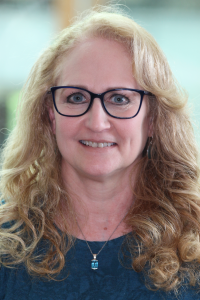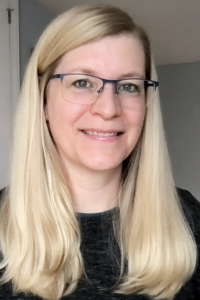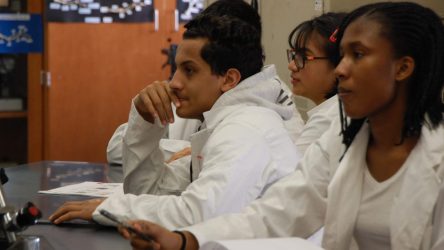In the United States more than half of the students entering science and technology fields will graduate in another field of study despite efforts to recruit and retain diverse students, including women and people of color. A perspective piece published on June 2 in Science from the Wisconsin Institute for Discovery (WID) suggests that outdated classroom teaching methods discourage members of historically excluded communities (HECs) from graduating with a degree in science.

Lead author Jo Handelsman, Director of the Wisconsin Institute for Discovery (WID) at the University of Wisconsin–Madison points to current teaching models that place the burden mainly on students to succeed in achieving their goals in STEM (science, technology, engineering, and mathematics).
This matters because attracting diverse people to STEM is an ongoing goal in the scientific community to provide equal opportunity and strengthen science. “Diverse groups of people have been shown again and again to produce more robust and creative outcomes,” says Sarah Miller, Tiny Earth Executive Director and co-author who contributed to the article.
Notably, other majors such as humanities, business, and social sciences do not have the high attrition of students from historically underrepresented communities that STEM fields do. Given that many students who leave STEM majors do graduate college, there must be compelling reasons why they abandoned STEM.
Outdated classroom teaching models are discriminatory. Ultimately, we need to stop trying to fix the students and instead focus on our classrooms. Only through systemic change can we transform STEM education into an enterprise in which everyone can succeed.
–Jo Handelsman
For example, extensive interviews of STEM college students showed the biggest factor that discouraged them was outdated teaching methods. Specifically lecture style teaching dominates introductory courses in which students are passive participants. Furthermore the “weed-out mentality” is pervasive and sends a message that instructors expect high failure rates. Many instructors use the attrition rate as an indicator that their class is rigorous and only the “best” students will persist. However, this mentality often turns students away, especially those from groups that are already underrepresented. “The exclusive attitude implies that “science isn’t for everyone,” says Handelsman.
Instead Handelsman and her colleagues say that decades of research shows that instructors with a “growth mindset” who send the message that with sufficient hard work everyone can succeed foster more success than those with the weed-out mentality.
Another classroom factor in success of all students, but particularly those from groups who were historically excluded from STEM, is active learning. Engaging in research is the ultimate form of active learning and STEM retention, but students from certain backgrounds have less access to participate in faculty research, say the authors. To make research experiences equitable and accessible to all, the authors recommend course-based undergraduate research experiences.
An example is Tiny Earth, an undergraduate research course developed by Handelsman and colleagues at WID. Tiny Earth offers students around the world the opportunity to isolate antibiotic-producing bacteria and characterize them and the compounds they produce. The structure of this course allows instructors to actively engage and help students identify as scientists. Once they have had this experience students tend to seek out other opportunities in science.
It allows for intellectual ownership of their projects.
–Sarah Miller

The authors offer other evidence-based teaching methods that can be easily integrated into lecture-based courses. One that Handelsman says is particularly effective is having students write briefly about what matters to them or their own abilities and strengths. This boosts their performance by validating their values and sending a message that they belong, she says.
Three other simple changes are holding classroom discussions, taking comprehension breaks to gauge where students are, and exposing students to the experiences of more senior students who went through adversity and succeeded. Research shows that these practices increase student persistence and success in STEM.
Handelsman also encourages unconscious bias training to help reduce discrimination. The authors further advocate for exposing students to diverse role models to diminish the stereotype that diverse scientists do not exist. Even as little as two minutes of exposure to a positive female role model can increase retention of women in STEM.
Half a century of educational research shows that the same teaching practices that close racial gaps in persistence in STEM majors also enhance learning for most students, so why aren’t we using proven methods? Continuing to use less effective methods constitutes teaching malpractice and gender and racial discrimination.
By making changes in the traditional classroom model the authors believe the US scientific community can achieve its goals for a more diverse and innovative science workforce.
Read the entire article in Science.
-Laura C. Red Eagle


You must be logged in to post a comment.